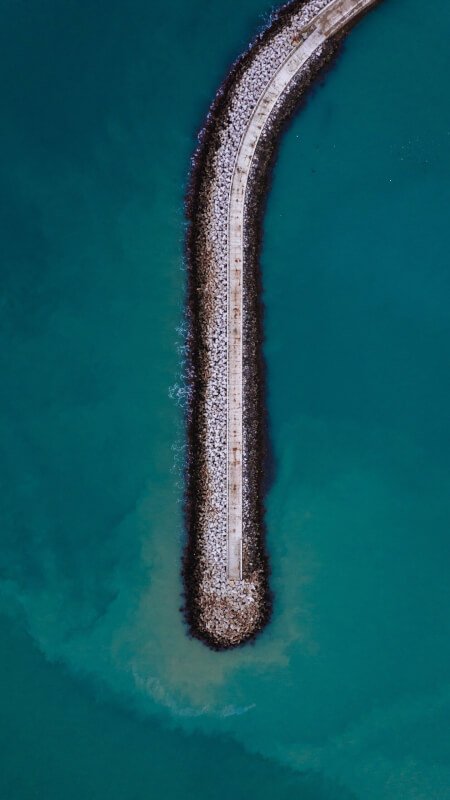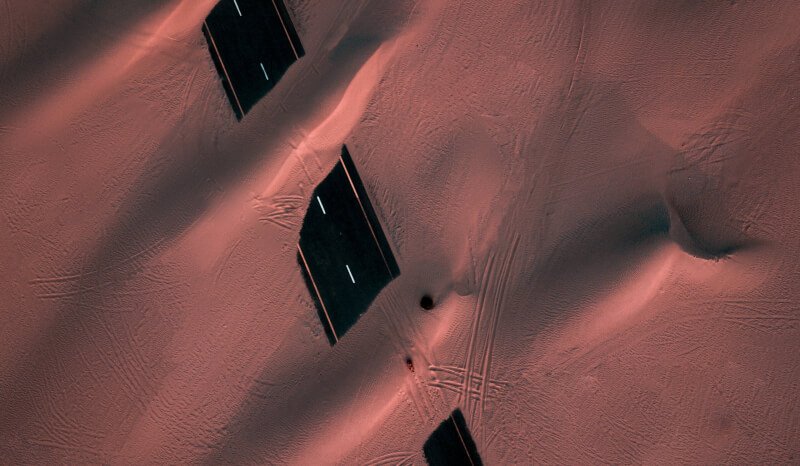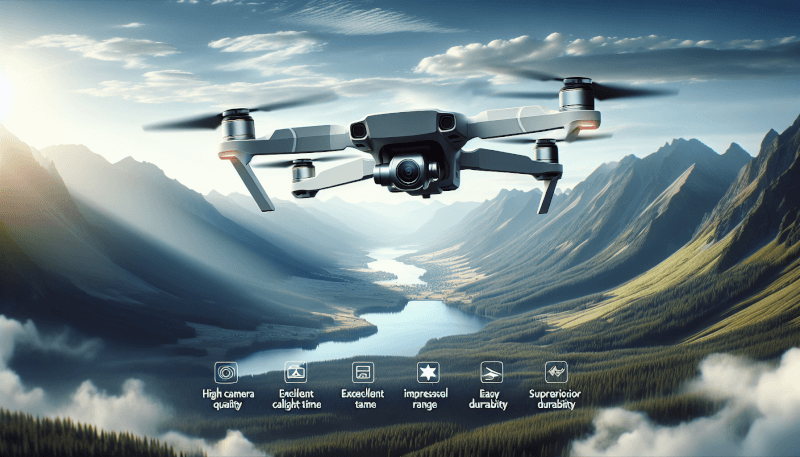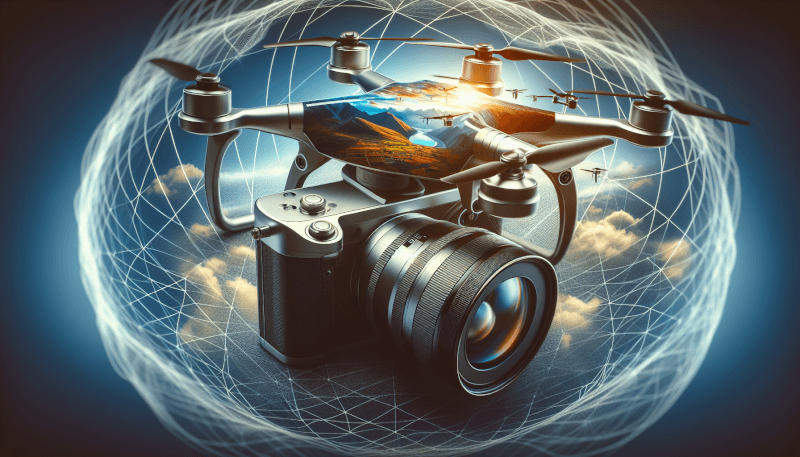When it comes to choosing a drone for professional use, there are several essential factors that you need to consider. With the ever-growing popularity of drones in various industries, such as photography, filmmaking, agriculture, and surveying, selecting the right drone can greatly impact the success of your projects. From flight time and camera specifications to durability and safety features, this article will guide you through the top factors to keep in mind when choosing the perfect drone for your professional needs. Whether you’re an experienced drone operator or just starting your journey in the world of unmanned aerial vehicles, understanding these factors will help you make an informed decision and take your work to new heights.

Camera Quality
When choosing a drone for professional use, one of the top factors to consider is the camera quality. The camera on a drone is essential for capturing high-quality aerial imagery and videos. There are several aspects to consider when it comes to camera quality.
Sensor Size and Type
The sensor size and type play a crucial role in determining the image quality and low-light performance of the camera. Larger sensors generally produce better image quality and have improved dynamic range. Different drones come with various sensor sizes and types, so it’s crucial to choose one that meets your specific needs.
Resolution
Resolution is another vital aspect of camera quality. Higher resolution cameras can capture more detailed images, which is particularly important for professional use. Consider drones that offer at least 4K resolution or higher for optimal image quality.
Image Stabilization
Image stabilization is essential to ensure steady and smooth footage. Drones equipped with advanced gimbal systems can significantly improve stability and reduce unwanted camera movements. Look for drones with 3-axis or even 4-axis gimbal stabilizers for the best image stabilization performance.
Bitrate and Compression
The bitrate and compression used in the camera’s video recording can greatly affect the quality of the footage. Higher bitrates and less aggressive compression algorithms preserve more details and result in better video quality. It’s advisable to choose a drone with adjustable bitrate and compression settings to have more control over the final output.
Lens Options
Having different lens options can provide versatility and enable you to capture a wide range of shots. Some drones offer interchangeable lenses, allowing you to switch between wide-angle, zoom, or even specialized lenses for specific purposes. Consider the available lens options and choose a drone that best suits your professional needs.
Flight Performance
Drone flight performance is another crucial factor to consider when choosing a drone for professional use. The flight performance of a drone affects its maneuverability, stability, and overall capabilities.
Flight Time
Flight time refers to the duration a drone can stay airborne before its battery needs recharging. Longer flight times are advantageous, especially for professional users who require extended flying sessions. Consider drones that offer a minimum flight time of 20 minutes or more, or even models that have swappable batteries for seamless continuation of the flight.
Maximum Speed and Altitude
The maximum speed and altitude capabilities of a drone influence its versatility in capturing different types of shots. Higher maximum speeds allow you to cover greater distances quickly, while increased altitude capabilities enable you to capture unique aerial perspectives. Consider drones with faster speeds and higher altitudes if these features align with your professional needs.
Stability and Maneuverability
Stability and maneuverability are crucial for capturing smooth and precise shots. Look for drones equipped with advanced flight control systems and sensors that provide excellent stability and responsiveness. Some drones also offer intelligent flight modes that enhance maneuverability and facilitate smooth tracking shots.
Obstacle Avoidance
Obstacle avoidance technology is a valuable feature, especially when flying in complex environments. Drones with obstacle avoidance sensors can detect and avoid potential collisions with objects, providing an added layer of safety and preventing accidents. Consider drones that come equipped with obstacle avoidance capabilities if you frequently operate in crowded or challenging locations.
GPS and Navigation
Having GPS and navigation features on a drone can greatly enhance its flight performance. GPS allows for accurate positioning, precise hovering, and intelligent flight modes. Navigation systems enable automated flight paths and waypoints, making it easier to execute complex shots with precision. Look for drones that have reliable GPS and navigation capabilities for a smoother and more efficient flying experience.

Payload Capacity
The payload capacity of a drone refers to its ability to carry additional equipment or accessories. For professional users who may need to attach specialized cameras, sensors, or other tools, considering the payload capacity is crucial.
Weight and Size Limitations
Take note of the weight and size limitations of a drone to ensure compatibility with the additional equipment you plan to use. Different drones have varying payload capacities, and exceeding these limits can affect the drone’s flight performance and stability. Be sure to choose a drone that can support the weight and size of your desired payload.
Compatibility with Additional Equipment
Check if the drone is compatible with the additional equipment or accessories you intend to use. Some drones offer specific mounting options or have dedicated ports for attaching cameras, sensors, or other devices. Ensure that the drone you choose can support and work seamlessly with the equipment you need for your professional projects.
Gimbal Support
If you plan to use a camera or sensor that requires stabilization, consider drones that provide gimbal support. Gimbals help to stabilize the attached equipment, resulting in smoother shots and reduced camera movements. Look for drones that offer compatibility with gimbals for optimal stabilization and flexibility in your professional endeavors.
Drone Design
The design of a drone can have a significant impact on its functionality and usability. When choosing a drone for professional use, consider the following design aspects.
Portability and Foldability
Portability is crucial, especially if you need to transport your drone to various locations for work. Look for drones that are compact and lightweight, making them easy to carry and travel with. Additionally, drones with foldable designs can further enhance portability, allowing you to pack and store them conveniently.
Build Quality and Durability
Professional use often involves demanding and challenging environments. It’s important to choose a drone with excellent build quality and durability to withstand rough conditions. Look for drones made from high-quality materials that are resistant to impact and can withstand exposure to dust, water, and other external elements.
Weather Resistance
Consider drones that offer weather resistance features to ensure their performance and longevity in different weather conditions. Weather-resistant drones can withstand exposure to rain, wind, and other adverse environmental factors, allowing you to continue operations without interruptions. Check if the drone has an IP rating or any specific weather-resistant certifications.

Control Options
The control options available with a drone greatly affect its ease of use and versatility. Consider the following control aspects when choosing a drone for professional use.
Remote Controller Range
The range of the remote controller determines how far you can fly your drone and maintain a stable connection. Consider drones with long-range remote controllers, especially if you need to operate in large open areas or cover substantial distances. Longer controller ranges provide more flexibility and allow for expansive shots.
Mobile App Integration
Mobile app integration enhances the overall user experience and provides additional control and features. Look for drones that have mobile apps compatible with your smartphone or tablet. These apps often offer live video streaming, advanced flight settings, and the ability to change camera settings conveniently.
First-Person View (FPV) Capability
First-person view capability enables you to see what the drone’s camera sees in real-time. FPV is particularly essential when framing shots or maneuvering the drone precisely. Consider drones that offer FPV functionality either through a dedicated screen or through mobile app integration for an immersive flying experience.
Autonomous Flight Modes
Autonomous flight modes provide automated flight capabilities, allowing you to focus on capturing the perfect shot. Look for drones that offer features like follow me, orbit, waypoint navigation, or active tracking. These autonomous flight modes enable the drone to fly and follow predetermined paths or subjects, freeing you to concentrate on creativity and framing.
Battery Life and Charging
Battery life and charging options are essential factors to consider to ensure uninterrupted productivity during professional projects.
Battery Capacity
Battery capacity directly impacts the flight time and overall performance of a drone. Higher-capacity batteries allow for more extended flying sessions without the need for frequent recharging. Check the battery capacity of the drone and consider purchasing additional batteries if longer flight times are necessary for your projects.
Charging Time
Consider the charging time required for the drone’s batteries. Faster charging times can significantly reduce downtime and allow for more efficient workflow. Look for drones that come with quick-charging capabilities or consider investing in a separate charger that can charge multiple batteries simultaneously.
Swappable Batteries
Having swappable batteries is advantageous as it allows you to continue flying without waiting for the batteries to recharge. If the drone you choose supports swappable batteries, consider purchasing extra batteries to ensure uninterrupted flight sessions. Swappable batteries can significantly increase productivity, especially when working on time-sensitive projects.

Regulations and Licensing
Compliance with local regulations and licensing requirements is crucial when using a drone for professional purposes. Be aware of the following considerations.
Compliance with Local Regulations
Different countries and regions have specific rules and regulations regarding drone operations. Ensure that the drone you choose complies with the local regulations in your area. Familiarize yourself with the limitations and restrictions imposed by authorities to avoid legal issues and ensure safe and responsible drone use.
Required Licensing or Certifications
Some countries may require individuals to obtain specific licenses or certifications to operate drones for commercial use. Research the local regulations to determine if you need any special permits or qualifications to legally operate a drone for professional purposes. Adhering to licensing requirements ensures compliance with regulations and promotes responsible drone usage.
Budget
When choosing a drone for professional use, it’s essential to consider your budget and the overall cost of ownership. Evaluate the following financial factors.
Initial Cost
The initial cost of purchasing a drone can vary significantly depending on its features, capabilities, and camera quality. Define your budget and explore drones that offer the essential features within your price range. However, remember that investing in a higher-quality drone may yield better results in the long run.
Cost of Spare Parts and Accessories
Consider the cost of spare parts and accessories when assessing the overall budget. Accidents happen, and components may wear out or require replacement over time. Research the availability and cost of spare parts for the drone you choose to ensure that maintenance and repairs are financially viable in the long term.
Maintenance and Repair Costs
Along with spare parts, evaluate the potential maintenance and repair costs associated with the drone. Complex drones may require professional servicing, which can incur additional expenses. Consider the ease of self-maintenance and repairability of the chosen drone to optimize your budget and minimize future costs.
Insurability
Professional drone use involves risks, including the possibility of accidents or damage to the equipment. Investigate insurance options available for drones and evaluate the coverage provided. Insuring your drone can provide peace of mind and protect your investment in case of unforeseen circumstances. Compare insurance plans and consider their cost in relation to the overall budget.

Customer Support and Warranty
Reliable customer support and warranty coverage are crucial factors when investing in a professional drone. Consider the following aspects.
Manufacturer’s Reputation
Research the reputation and track record of the drone manufacturer to gauge the quality of their products and customer support. Look for established brands with positive reviews and a history of providing excellent customer service. A reputable manufacturer is more likely to offer reliable products and reliable support when needed.
Warranty Coverage
Check the warranty coverage provided by the manufacturer for the drone you intend to purchase. A comprehensive warranty can provide protection against manufacturing defects and certain types of damage. Read the warranty terms and conditions to understand what is covered and the duration of the warranty period.
Availability of Spare Parts
Ensure that the manufacturer or authorized dealers offer readily available spare parts for the drone. Availability of spare parts is essential for timely repairs and maintenance. Investigate the availability and prices of commonly replaced parts to assess the long-term feasibility of owning the drone.
Technical Support
Assess the technical support offered by the manufacturer or authorized service centers. Reliable technical support can save you time and effort when troubleshooting issues or seeking advice. Check the availability of customer support channels, such as phone, email, or live chat, to ensure prompt assistance when needed.
User Experience and Interface
The user experience and interface of a drone can significantly impact its usability and overall satisfaction. Consider the following elements.
Ease of Use
Choose a drone that is user-friendly and easy to operate, even for beginners. Intuitive controls and a straightforward setup process can save time and frustration, allowing you to focus on capturing exceptional aerial footage. Consider drones with guided tutorials or beginner-friendly modes to simplify the learning curve.
Intuitive Controls
Ensure that the drone’s controls are easy to handle and intuitive. Responsive controls and well-designed interfaces contribute to a smoother flying experience. Responsive joysticks or touch-sensitive controls can enhance precision and enable precise maneuvering, crucial for professional applications.
User-Friendly Software
Check the quality and functionality of the drone’s software interface. A user-friendly software interface allows for easy access to settings, flight parameters, and camera controls. Consider drones that offer well-designed and intuitive software, providing a seamless user experience.
Real-Time Feedback
Real-time feedback is valuable during flights, as it allows you to monitor the drone’s status and settings. Look for drones that provide real-time telemetry data, such as battery life, GPS positioning, altitude, and flight speed. Immediate feedback helps in maintaining situational awareness and optimizes the flying experience.
In conclusion, when choosing a drone for professional use, it’s important to consider various factors such as camera quality, flight performance, payload capacity, drone design, control options, battery life and charging, regulations and licensing, budget, customer support and warranty, and user experience and interface. Evaluating these factors thoroughly will ensure that you select a drone that meets your professional needs and provides exceptional aerial capabilities for your projects.


